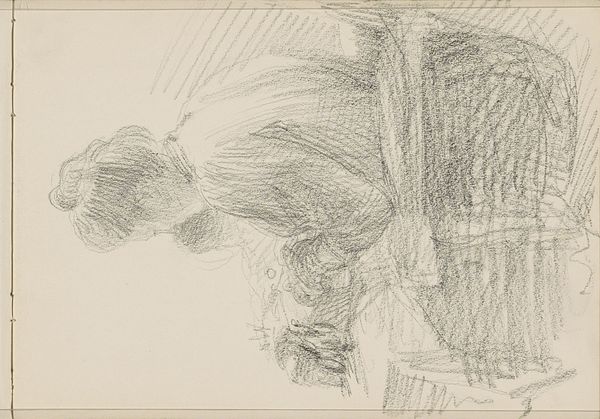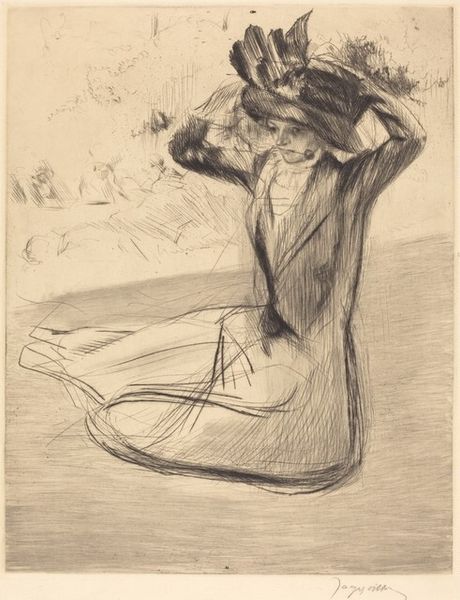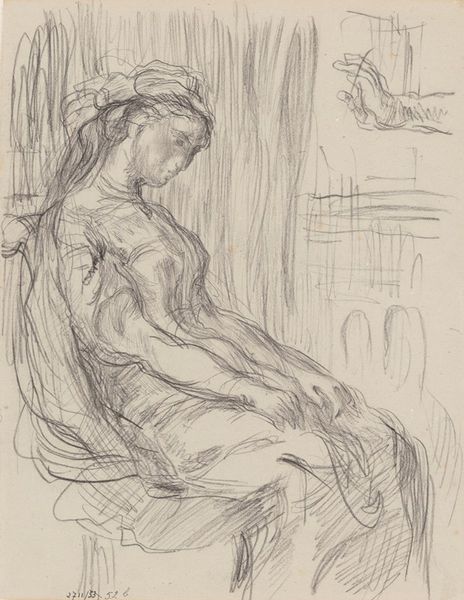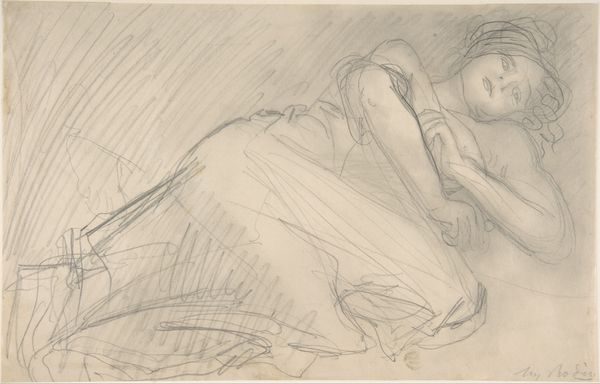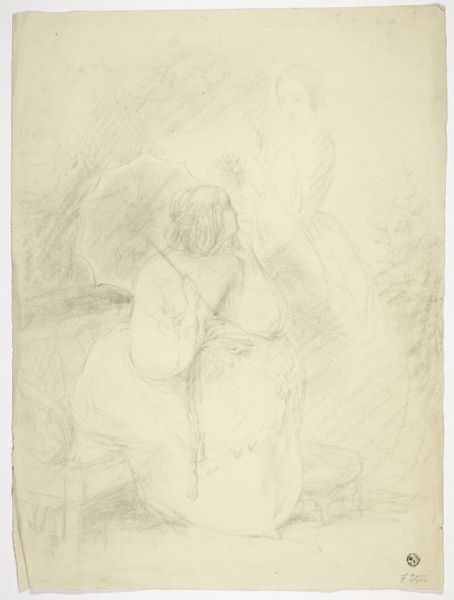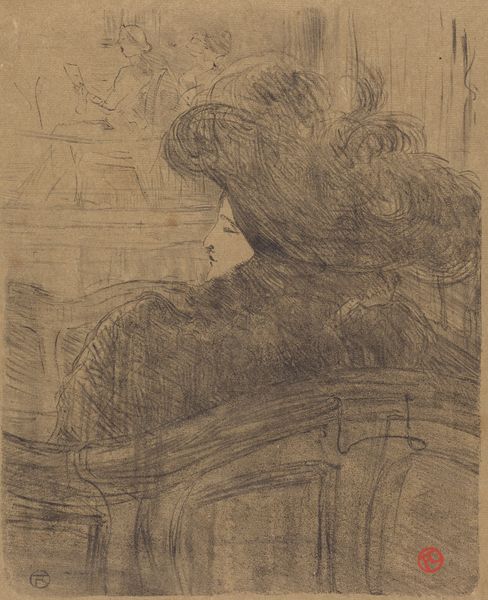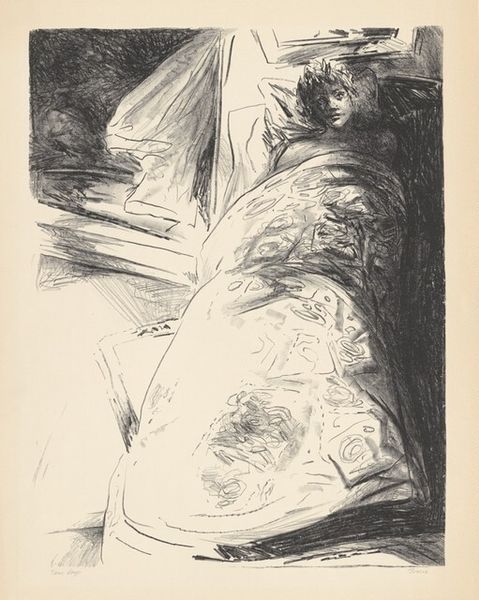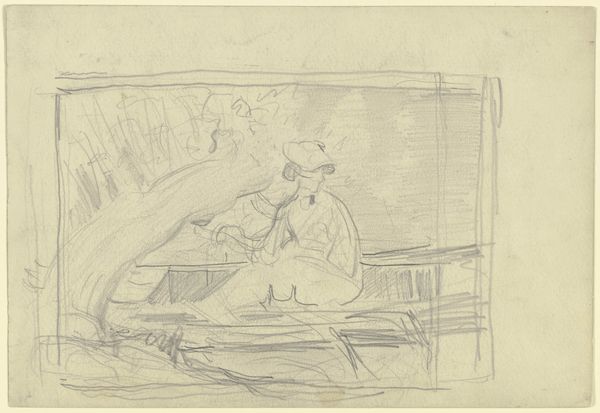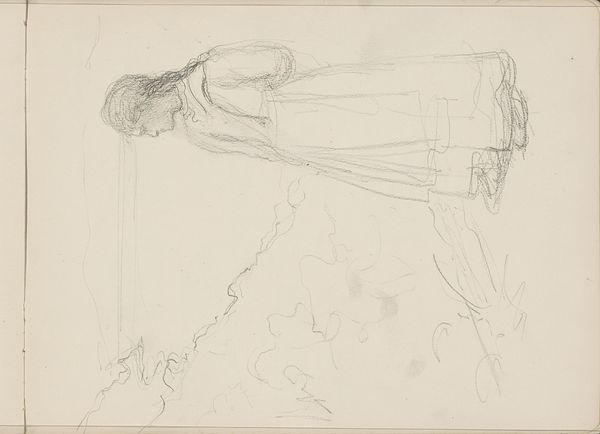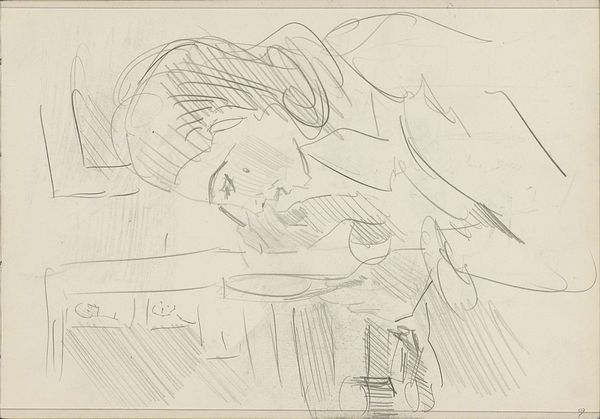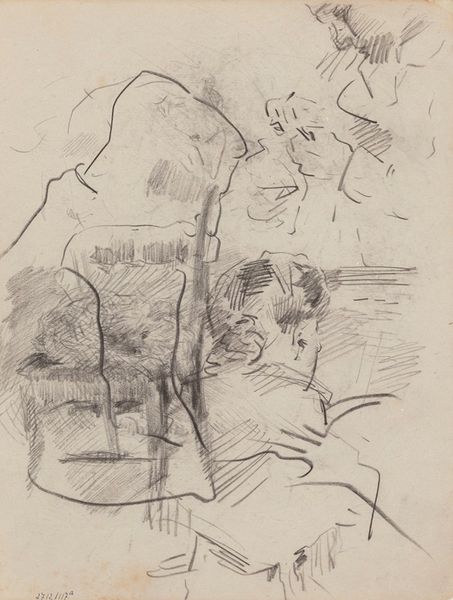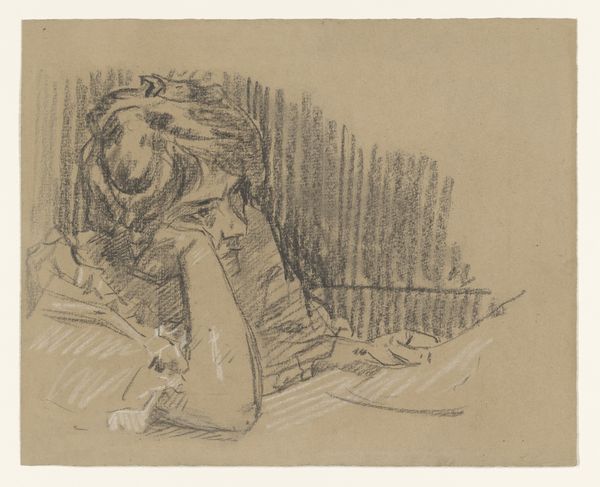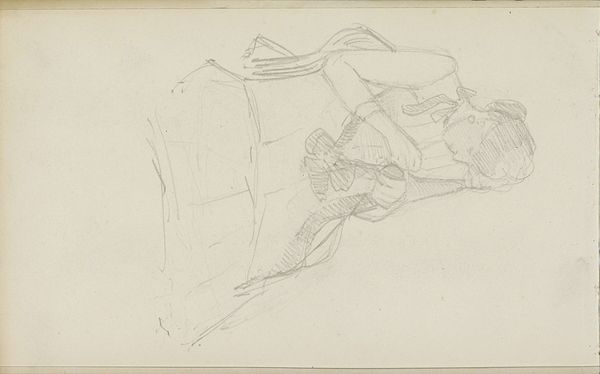
Marie-Thérèse, as a Vestal Virgin, Watching the Sleeping Minotaur (Marie-Thérèse, en vestale, veillant le mintaoure endormi) 1933
0:00
0:00
print, etching
#
portrait
# print
#
etching
#
figuration
#
line
#
surrealism
#
modernism
Copyright: National Gallery of Art: CC0 1.0
Curator: Before us, we have "Marie-Thérèse, as a Vestal Virgin, Watching the Sleeping Minotaur," an etching completed by Picasso in 1933. Editor: The somber tone is what strikes me initially, a contemplative quietude in those swirling lines. It has an almost dreamlike, unresolved quality to its composition. Curator: The imagery and context around this period of Picasso’s work provide essential clues to understanding its cultural significance. In the early 1930s, his relationship with Marie-Thérèse Walter was a major source of inspiration. Here he casts her as a Vestal Virgin, a priestess dedicated to Vesta, the Roman goddess of the hearth, home, and family. Her role, symbolically, involved protecting the sacred flame. Editor: But against whom or what is she guarding the Minotaur? The sharp etching work contrasts so starkly with the soft, rounded figure of the slumbering beast in the background. There’s a fascinating visual dichotomy at play. Curator: The minotaur figure was a complex symbol for Picasso himself during this period, encompassing bestial instincts but also the artist’s creative power. Marie-Thérèse as a Vestal Virgin embodies a kind of protective vigilance over this raw, creative energy, watching over his 'monstrous' creation with a quiet, internalized intensity. The gaze is both protective, but also sorrowful. Editor: Notice too how the curtains serve to obscure and reveal simultaneously. Their intricate patterning provides an aesthetic depth but also creates distance, subtly underscoring the complexities of the relationship. Do you think there is also an element of imprisonment at play here, by Picasso himself? Curator: Certainly the layering of meaning and imagery allows us to engage with the complexities of gender roles, artistic ego, and personal relationships within Picasso’s intimate life. It provides access to intimate aspects of his lived reality during a turbulent moment in European culture and art history, don't you agree? Editor: Absolutely, these historical and emotional threads contextualize those deceptively simple lines, and enrich our viewing experience tenfold. Curator: Indeed. It’s fascinating to think about the personal, emotional stakes entangled in this otherwise simple image. Editor: It brings a kind of resolution to the aesthetic tension, a completion.
Comments
No comments
Be the first to comment and join the conversation on the ultimate creative platform.
